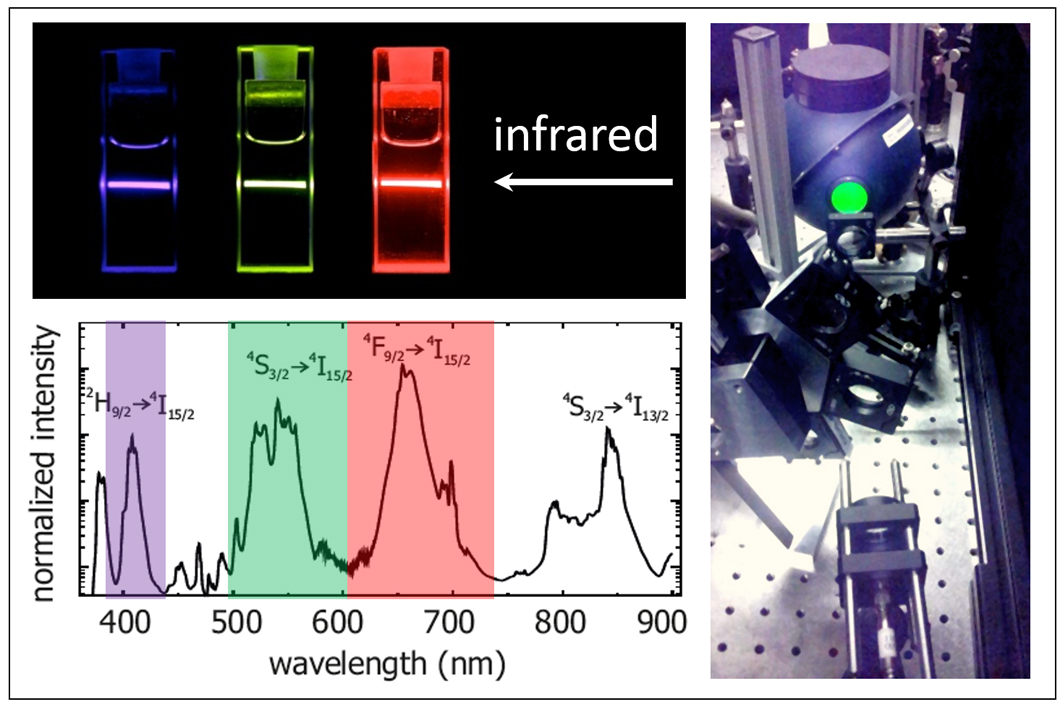
Left, upper panel: Visible emission of upconversion nanoparticles dispersed in an organic solvent upon infrared excitation (980 nm); Left, lower panel: corresponding spectrally resolved intensity distribution or emission spectrum; Right panel: photograph of the integrating sphere setup used for the measurement of the upconversion luminescence of green emitting upconversion nanoparticles.
Source: BAM, Divison Biophotonics
Determination of efficiencies of nonlinear optical processes
Upconversion is a process which converts light of low energy, e.g. (near) infrared light, into light of higher energy like visible light. This process occurs in crystals that contain two different optically active lanthanide ions like ytterbium (Yb3+) and erbium (Er3+). Ytterbium ions absorb the excitation energy and transfer it to neighboring erbium ions. The erbium ions store the energy until a next energy transfer process occurs which excites the erbium ions to a higher energy level. This excited state can then emit photons of higher energy as the absorbed ones. Because several energy transfer steps are involved in the excitation process, the efficiency of the upconversion luminescence depends on excitation power density. Potential areas of application of such materials ar optical reporters for assays, barcodes for anticounterfeiting, new optical devices, and solar cells.
For many applications of upconversion nanocrystals particularly in the life sciences, nanometer-sized crystals are needed. For such small particles, the surface area is rather large compared to the volume, which can favor nonradiative energy loss processes at the surface, thereby resulting in a reduction in luminescence efficiency. A key quantity to describe the efficiency of upconversion materials is the quantum yield of the upconversion luminescence, which equals the number of emitted short wavelength photons relative to the number of absorbed low energy photons.
The potential of upconversion nanomaterials for security applications, bioanalytics, and photovoltaics is largely determined by the efficiency of the upconversion luminescence for a given particle size and environment. Scientists of division Biophotonics at BAM hence developed a method for the determination of the excitation power density-dependent efficiency of the upconversion process and the spectral characteristics of the upconversion luminescence, i.e. the emission color. In addition, they also studied how these material properties change in dependence on particle surroundings (powders in air and particles dispersed in different solvent) and particle size (nm-sized and µm-sized) and quantified the luminescence quenching processes.
Power dependent upconversion quantum yield of nano- and microparticles: measurements and simulations
Martin Kaiser, Christian Würth, Marco Kraft, Iko Hyppänen, Tero Soukka and Ute Resch-Genger
Nanoscale, 2017, 9, 10051, DOI: 10.1039/c7nr02449e
BAM Abteilung Analytical Chemistry; Reference Materials, Division Biophotonics
Read more about optical processes here "Optical Technologies - Using light more efficiently"


